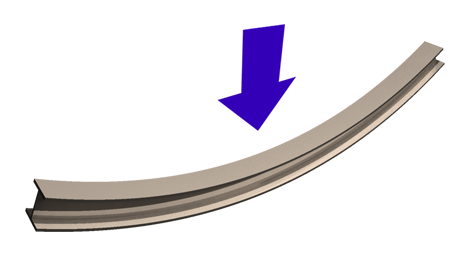stresses : are the physical demands that a body or object must withsatnds when
one or more external forces are applied to it.
the basics stresses are :
Compression:this is caused by forces acting on a body that tend to
flatten it or reduces its length ot thickness
It happens in structures that need to support weigths. For example, when we lean on
a table, it undergoes compressive ; columns are also subject to compressive stress.
Tension :this is caused by forces acting on a body that tend to stretch it. For example,
when two people pull on an object for opposite directions.
Bending: is caused by forces acting on an element that make it curved or bend. It is
done by supporting the two ends and applying force in the centre, as shown in the figure
to the rigth. This is what happen to a shelf when we put lot of heavy box on it.
Torsion: this is caused by forces acting on a body that make it twist. For example, when two
people hold a tower at either end and twist it to bring it out; a crank is also subjected to
torsion.
Shear: this is caused by two equal forces applied it opposite direction that act on lines
of action close to each otherf. Shear stress will tend to cut the material if itcannot twist
or bend. For example, when we cut paper with a pair of scissors, or the point where a
beam rest on a column.
tension:
compression:
bending:
torsion :
shear;
rigidity: if a material is rigid, it does not change shape when force is applied to it.
By contrast, if the material does change sahpe, we say that it is deformable.
(page 95 ex 12)
12. Think about the following objects and satate whether they are rigid, plastic or elastic:
ballon, empty drinks can, window frame, clay, catapult, door.
rigid :door wndow frame
plastic: ballon catapult
elastic: clay empty drinks


